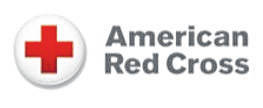
Being prepared for crises saves lives. Recently, the American Red Cross released a new course, First Aid for Severe Trauma (FAST), which equips participants with skills to handle life-threatening bleeding emergencies. Such training has the potential to save thousands of lives, considering that traumatic injuries are the leading cause of death in Americans up to age 45.
The FAST course, which is compliant with “STOP THE BLEED,” covers response principles, scene safety and emergency communications in addition to caring for life-threatening bleeding with direct pressure and/or a tourniquet. When combined with psychomotor skills practice, participants earn a two-year certification from the Red Cross.
“A person can die from blood loss in just over five minutes,” says David Markenson, MD, chief medical officer in Training Services for the Red Cross. “We want to ensure our nation has a trained population able to respond to an emergency at a moment’s notice and to empower the next generation by offering trainings to young people.”
FAST is a new Red Cross educational program developed with collaboration from the Red Cross, National Center for Disaster Medicine and Public Health at the Uniformed Services University and the Department of Homeland Security Science and Technology Directorate (DHS S&T). Thanks to a DHS S&T grant, the FAST course and digital materials are available at no charge for high school students under the age of 19.
High schools are an important cohort for this training, as a new survey from the Red Cross and HOSA-Future Health Professionals shows most high school students, teachers and school staff believe that being trained in bleeding control is important for school emergency preparedness. A wide variety of trauma events can impact high school students, including automobile accidents, sports-related injuries or classroom mishaps.
To demonstrate the desire for a comprehensive bleeding control program such as FAST, the Red Cross and HOSA-Future Health Professionals surveyed more than 3,000 students and 400 teachers and school staff in July. Key findings from the study include:
There is universal support for bleeding control training at schools, with all respondents (100%) placing significance on bleeding control education for school emergency preparedness. In fact, only 2 out of 2,999 respondents said that it was either not very or not at all important. A majority of schools (55%) report that they offer CPR training. This aligns with state legislation requiring CPR education as a high school graduation requirement in 41 states and Washington, DC.
Only a small percentage of schools (14%) currently offer bleeding control training, which speaks to the need to add it alongside CPR education as a graduation requirement. A majority of teachers/school staff believe that this training is “very” important for themselves (87%) and their students (71%). In fact, when combined with “somewhat” important for net importance, the numbers rose to 100% and 97%, respectively.
“Bleeding control training should be as familiar to high school students as CPR training is today, so that bystanders can be immediate responders if called upon,” said Craig Goolsby, MD, Defense Department liaison to the Red Cross Scientific Advisory Council. “Accidents happen more frequently than we would like, but people can save lives when they are prepared.”
The Red Cross has produced a supplemental Classroom Kit to enable teachers to more effectively deliver the FAST program. The Classroom Kit as well as bleeding control kits and tourniquets are available at redcrossstore.org.
The American Red Cross shelters, feeds and provides comfort to victims of disasters; supplies about 40% of the nation’s blood; teaches skills that save lives; distributes international humanitarian aid; and supports veterans, military members and their families. The Red Cross is a nonprofit organization that depends on volunteers and the generosity of the American public to deliver its mission. For more information, please visit redcross.org or cruzrojaamericana.org, or visit us on Twitter at @RedCross.


